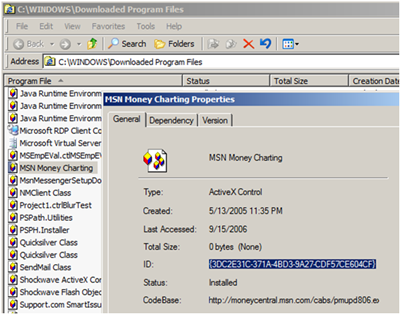
- Creation Date
- Last Access Time
- GUID (the unique identifier)
- Codebase (where the ActiveX control came from)
Within this Explorer window, we are limited in what actions we can perform. With the release of Windows XP Service Pack 2 and Windows Server 2003 Service Pack 1, Internet Explorer introduced a management system for ActiveX controls called the Add-On manager (shown below). This new UI provides a more enhanced view that allows very granular control over which ActiveX controls are loaded into the Internet Explorer process when launched. Within this managment UI we are able to enable, disable and even update ActiveX controls.

OK - that will do it for this quick look at ActiveX control management. In Part Three, we'll take a look at ActiveX and Security Zones. Below are some additional resources regarding ActiveX.
Additional Resources:
- KB 154544: Description of ActiveX Technologies
- MSDN: About ActiveX Controls
- MSDN: Introduction to ActiveX Controls
- Brent Goodpaster
 Microsoft
Microsoft